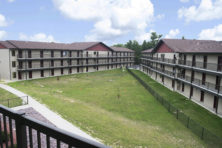Housing Is Crucial to Economic Growth and Sustainability
- Share
- Tweet
- Pin
- Share
by Jim Schuessler, Executive Director, Door County Economic Development Corporation
During the past dozen years, the housing-affordability crisis has intensified in many counties across America. Young professionals, working families and seniors alike increasingly have a hard time finding housing they can afford, particularly in neighborhoods that are well connected to employment options, transportation, health care and other services and amenities.
Rising housing costs, insufficient new residential construction and slow-growing wages have led to a situation in which teachers, police officers and health-care providers – as well as retail and restaurant workers and those in creative industries – are forced to either commute long distances to find housing they can afford, or double or triple up in shared housing to reduce those costs.
This challenge has helped to fuel a labor-force crisis in Door County.
Demographics and population are a challenge. Both Door County overall and the county’s largest community, Sturgeon Bay, have suffered population declines during the past 15 years. Meanwhile, nearby Brown County’s population has grown by nearly 13 percent during that same time frame.
The future points to a challenge here as well: Door County’s median population age is growing at four times the national average.
When the local workforce can’t find housing it can afford, the entire community suffers. It has been well established through research that having access to affordable, safe and stable housing is associated with positive health, education and economic outcomes for individuals and families. But having a sufficient supply of housing that’s affordable to households all along the income spectrum is also critical to supporting vibrant and sustainable local economies.
There are several ways to think about how housing availability and affordability relate to a county’s economic health and prosperity. Lower-wage workers are among the first to feel the pressures from higher rents and prices if there is an insufficient supply of affordable housing. This can include workers in the retail and restaurant sector; the travel, hospitality and tourism industry; and in many critical, community-serving occupations such as child-care workers, nursing assistants and home-health aides.
Those who have seen the Interfaith Prosperity Coalition’s A Place of Our Own film have learned about the often unsafe and undesirable conditions that newcomers are subjected to when seeking housing after relocating here.
When there is not enough housing that is affordable to lower-wage workers, these workers are often forced to look for housing farther out, which creates longer commutes for those workers and more traffic congestion for everyone. Furthermore, as workers have a harder time living in the community, businesses have a harder time finding workers to hire.
Even if workers do not leave the community, there are still implications for the local economy: When workers are forced to spend more on housing, they spend less on goods and services, and the local economy is therefore less able to support diverse retail, restaurant, recreation and other amenity options.
Businesses are increasingly saying that they are looking at quality of life, economic diversity and cultural tolerance as they seek to locate or expand. A key component of that quality of life is housing availability and affordability for workers at every level of the organization.
This link is increasingly evident at the county level, where counties compete with other counties and cities for economic development and offer incentives to attract businesses and a talented workforce. In places where high housing costs are strangling opportunity, there is an urgent need to create the right environment to build more housing. Counties that are relatively more affordable have an opportunity to get ahead of the curve by sustaining a high quality of life and a low cost of living that create a comparative economic advantage for that community.
What are we doing about it?
Calling attention to the problem is one step. During a recent meeting I participated in with a state-cabinet-level official, he expressed surprise that Door County has a housing crisis. It’s certainly understandable – how would he know if we don’t make him and others aware?
One planned solution is to propose policies that promote housing development, even beyond our existing toolbox. Housing is a nationwide crisis, yet there are some issues (infrastructure, geography, geology, the diversity of our economy) that certainly make the case for a pilot incentives initiative here.
Door County Economic Development Corporation is also working with several municipalities to help develop suitable sites and attract developers to those opportunities. What becomes an opportunity for a developer provides a part of the solution to our housing crisis. Because the cost of construction has skyrocketed, communities that have had the most success enabling development have provided incentives.
Finally, providing important information to municipalities about supporting the development community – particularly those focused on helping solve the specific housing sectors that are in crisis – is a component of our role in supporting development.
The National Association of Homebuilders regularly surveys developers of housing and estimates that regulations can drive up the costs of single-family homes by at least 24 percent and multi-family housing by 30 percent. Because developers invest millions in most projects to make them go, they are going to invest in places where they are supported and welcomed, not demonized.


